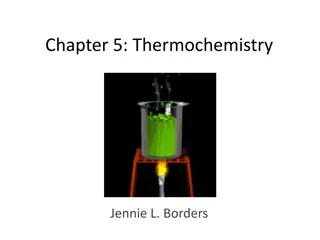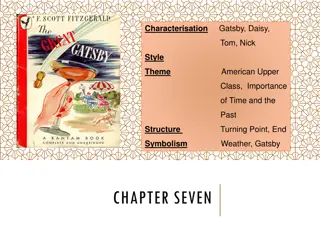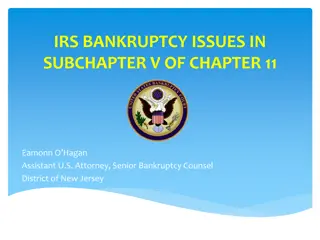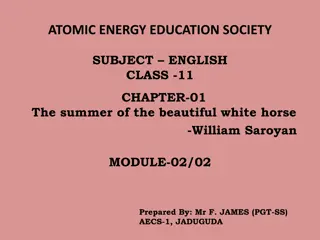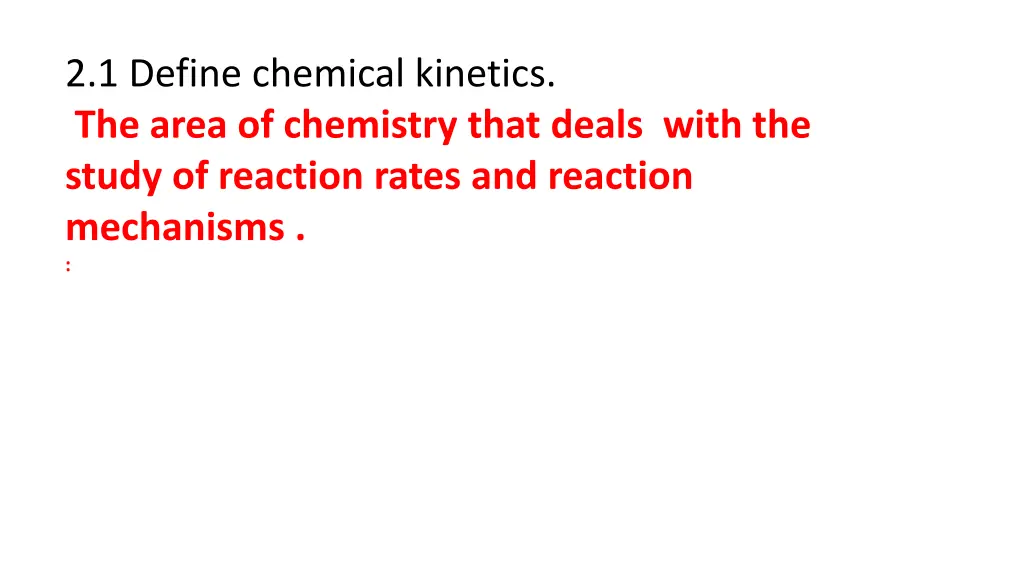
Understanding Chemical Kinetics and Reaction Rates
Explore the fundamental concepts of chemical kinetics, collision theory, and reaction rates in chemistry. Learn why collisions between particles are crucial for reactions, the conditions required for effective collisions, and how reaction rates indicate the progress of a chemical reaction over time.
Uploaded on | 2 Views
Download Presentation

Please find below an Image/Link to download the presentation.
The content on the website is provided AS IS for your information and personal use only. It may not be sold, licensed, or shared on other websites without obtaining consent from the author. If you encounter any issues during the download, it is possible that the publisher has removed the file from their server.
You are allowed to download the files provided on this website for personal or commercial use, subject to the condition that they are used lawfully. All files are the property of their respective owners.
The content on the website is provided AS IS for your information and personal use only. It may not be sold, licensed, or shared on other websites without obtaining consent from the author.
E N D
Presentation Transcript
2.1 Define chemical kinetics. The area of chemistry that deals with the study of reaction rates and reaction mechanisms . :
2.2 Describe collision theory and list its assumptions. It is the set of assumptions regarding collisions and reactions between molecules The assumptions are 1) Reacting substances (atoms, ions or molecules) must collide 2) Reacting substances must collide in the correct orientation 3) Reacting substances must collide with sufficient energy to form an activated complex
2.3Explain why a collision between two particles is necessary for a reaction to occur. Particles that are to react must come close to each other so the new bonds in the product can form, while old bonds in the reactants break
2.4 List two conditions, according to the collision theory, that must be met for a collision between reactant molecules to be effective in producing new chemical species. 1)It must be energetic enough to supply the necessary activation energy. 2) The colliding molecules must be oriented in a way that favors their efficient interaction.
2.5 Define reaction rate and identify its unit used generally Reaction rate is the change in concentration of reactant and product per unit of time . Units used generally are mol/L.s or M/s
2.6 Explain what the reaction rate indicates about a particular chemical reaction . The rate of change of the concentration of reactant or product in mol/L.s
2.7 Use a plot of concentration versus time to describe the progress of the reaction in terms of change in the concentration of reactants and products. As the reaction proceeds, the concentration of reactants decreases and the concentration of products increases and thus the rate of reaction decreases and the reaction slows down.
2.8 Calculate the average reaction rate using the rate of consumption of reactants or rate of production of products Average reaction rate = ( [? ?? ?? ?? ?? ?? ?? ?? ?])/ ? ? = ( [? ?? ?? ?? ?? ?? ?? ?])/ ? ?
2.9 Define activation energy and activated complex . Activation energy: The minimum amount of energy required by reacting particles in order to form the activated complex and lead to a reaction . Activated complex: A short-lived, unstable arrangement of atoms that can break apart and re-form the reactants or can form products; also sometimes referred to as the transition state
2.10 Describe the relationship between activation energy and rate of the reaction . The higher the activation energy, the slower the reaction rate .
2.11 Describe the relationship between reactant concentration and reaction rate As concentration of reactants increases, rate increases
2.12 Define catalyst and compare, using examples, between homogenous and heterogeneous catalysts A catalyst is a substance that speeds up the rate of chemical reaction without being used up. It offers an alternative pathway with a lower activation energy





